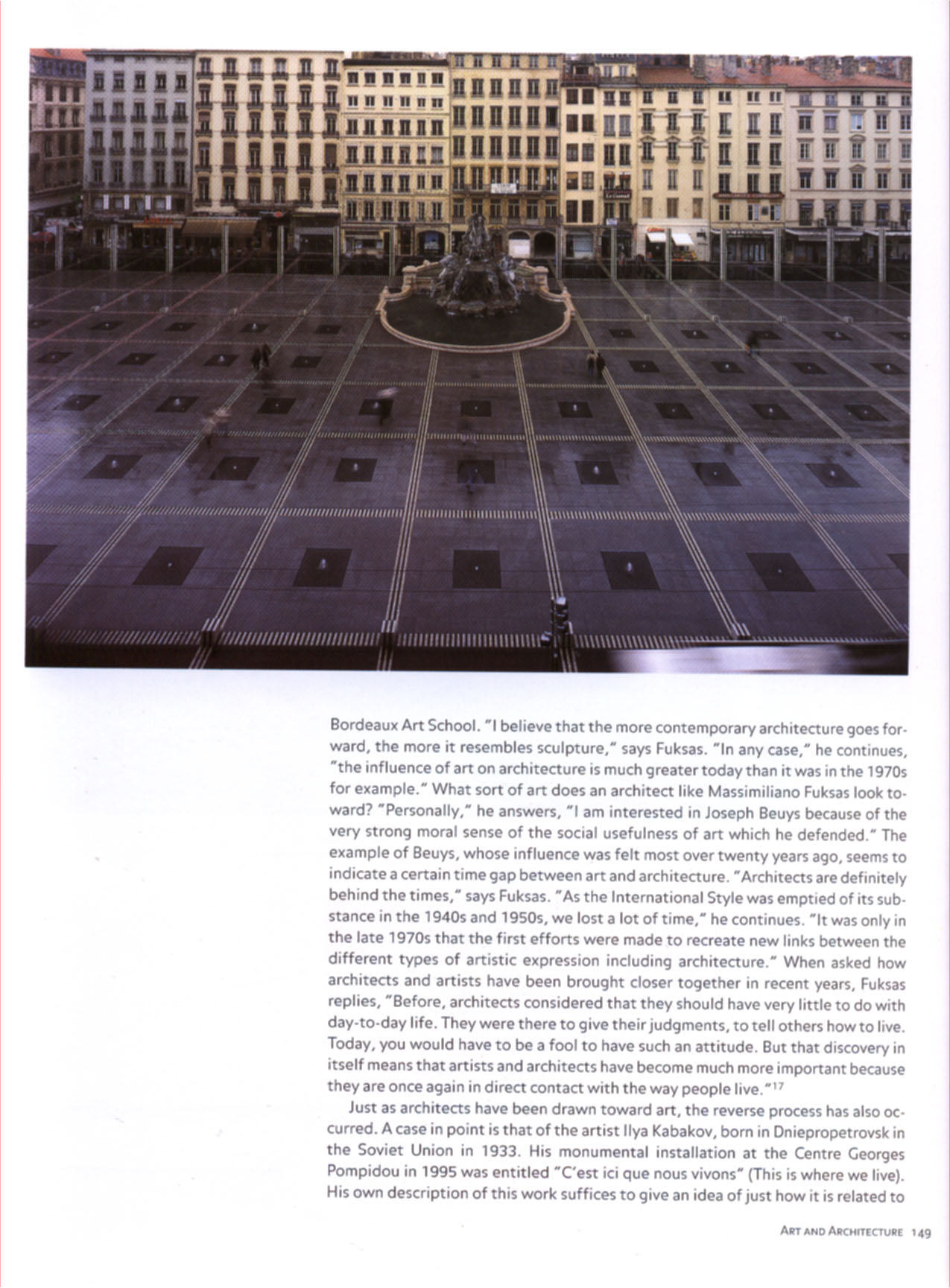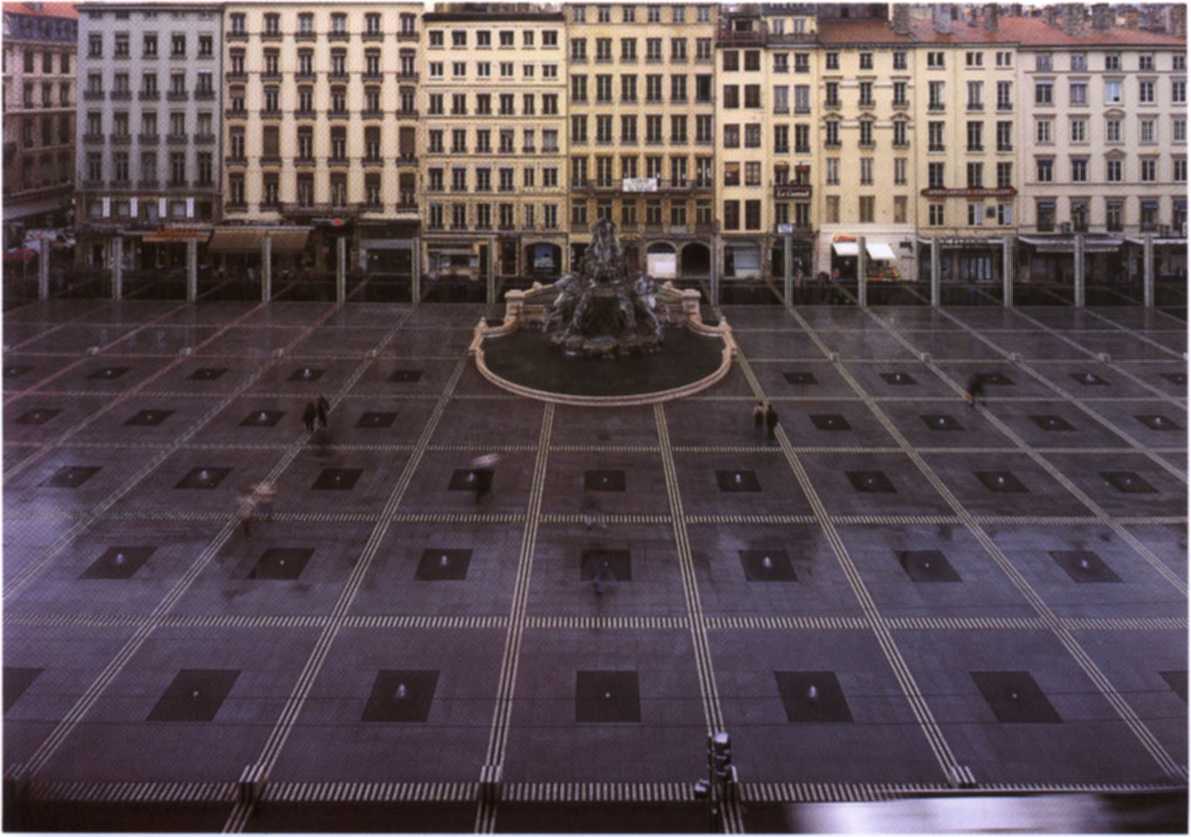29381 New Forms Taschen 139


Bordeaux Art School. 'I believe that the morę contemporary architeaure goes for-ward, the morę it resembles sculpture," says Fuksas. "In any case," he continues, "the influence of art on architecture is much greater today than it was in the 1970s for example." What sort of art does an architect like Massimiliano Fuksas look to-ward? "Personally," he answers, "I am interested in Joseph Beuys because of the very strong morał sense of the social usefulness of art which he defended." The example of Beuys, whose influence was felt most over twenty years ago, seems to indicate a certain time gap between art and architeaure. "Architeas are definitely behind the times," says Fuksas. "As the International Style was emptied of its sub-stance in the 1940s and 1950s, we lost a lot of time," he continues. "It was only in the late 1970s that the first efforts were madę to recreate new links between the different types of artistic expression including architeaure." When asked how architeas and artists have been brought closer together in recent years, Fuksas replies, "Before, architeas considered that they should have very little to do with day-to-day life. They were there to give their judgments, to tell others how to live. Today, you would have to be a fool to have such an attitude. But that discovery in itself means that artists and architeas have become much morę important because they are once again in direa contaa with the way people live."17
Just as architeas have been drawn toward art, the reverse process has also oc-curred. A case in point is that of the artist llya Kabakov, born in Dniepropetrovsk in the Soviet Union in 1933. His monumental installation at the Centre Ceorges Pompidou in 1995 was entitled "Cest ici que nous vivons" (This is where we live). His own description of this work suffices to give an idea of just how it is related to
Art ano Abchitecture i 49
Wyszukiwarka
Podobne podstrony:
New Forms Taschen 146 asked why he feels that art movements that reached their high point twenty yea
New Forms Taschen 048 Transport, Communications, Tali Buildings and the Urban Nomad Continuing urban
New Forms Taschen 123 Cultural Centers and Concert Halls The trend toward cultural centers intended
New Forms Taschen 156 Pages 166/167 Schweitzer BIM The Monument JoshuaTree, California. 1987-90
New Forms Taschen 190 Samitaur in Culver City challenges the use of urban space in a slightly differ
71714 New Forms Taschen 159 Right Frank Stella "Watson and the Shark” Aluminum on iron base Ove
69218 New Forms Taschen 104 built, Ando seeks to make the visitor aware that he is entering a sacred
więcej podobnych podstron